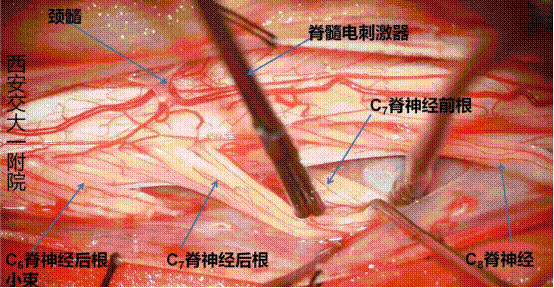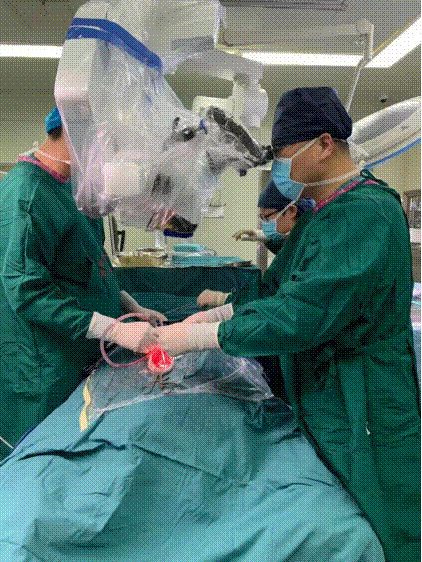Recently, under the support and cooperation from Department of Anesthesiology and Operating Room and under the guidance of Professor He Baixiang and Professor Bao Gang, Chief Physician Lian Minxue, Attending Physician Song Qian and Wang Ning, and Lian Haiping, an electrophysiological monitoring physician successfully performed selective posterior rhizotomy (SPR) and laminoplasty in the cervical spinal canal of a 22-year-old patient, Xiao Yang (anonymous name), with upper limb muscle spasm and hemiplegia under general anesthesia. Postoperatively, the patient remained physically stable, the muscle tension of the upper limbs was completely normal, and the upper limb function was significantly enhanced. The patient was discharged from hospital at postoperative 1 week. According to literature review, this is the first case of such kind in western China.

Two years ago, the 22-year-old patient suddenly suffered from muscle spasm and high muscle tension in the left upper limb, and the shoulder, elbow, wrist and finger showed flexion contracture deformity, leading to hemiplegia in the upper limbs.AOnemonth ago, after consulting Professor Lian Minxue, an expert from Department of Neurosurgery of the First Affiliated Hospital of Xi 'an Jiaotong University (XJTU) in diagnosis and treatment of cerebral palsy and hemiplegia, the patient was diagnosed with dystonia complicated with flexion deformity of the upper limbs. Zhang Hua, Director of Department of Neurosurgery and Professor He Baixiang, Head of the specialty team, organized a general discussion and determined a surgical plan. Cervical SPR was finally adopted and corresponding measures were prepared for potential intraoperative and postoperative complications.
At present, SPR is the most effective surgical treatment of muscle spasm caused by cerebral palsy, hemiplegia, craniocerebral injury and spinal cord injury. Cervical SPR has been proven to yield definite efficacy in treating the upper limb muscle tension and muscle spasm after cerebral palsy, hemiplegia and spinal cord injury. During cervical SPR, all the spinal nerve roots that dominate the upper limbs in the cervical spinal canal should be identified and SPR should be performed for corresponding spinal nerve roots, thereby relieving the muscle spasm of the upper limbs.However, cervical SPR is technically demanding because the cervical spinal cord is connected with the brain and other spinal cords, its complicated and critical functions, and narrow space of cervical spinal canal.In addition, during traditional SPR of the spinal nerves, total laminectomy is conducted to expose the spinal nerve roots, which destroys the lamina and the spinal stability, probably leading to postoperative cervical instability. Intraoperatively, the cervical spinal lamina-ligamentous complex was completely resected and subsequently fixed to the original position at the end of surgery, thereby maintaining the stability of cervical spine to the largest extent.

In recent years, Department of Neurosurgery of our hospital has performed various operations for increased muscle tension and limb deformity caused by cerebral palsy, hemiplegia, craniocerebral injury and spinal cord injury, and modified conventional surgical technology. Moreover, it alsocompleted the first case of lumbosacral segment SPR via the lower interboard approach by using microscope and neuroendoscope in China, and became the first to create innovative improvement in key technologies of two surgeries across the country. It ranked the first in Northwest China and was among the leading positions in China regarding the quantity and quality of cerebral palsy and hemiplegia operations. The success of cervical SPR has filled the gap in our hospital and western China.
